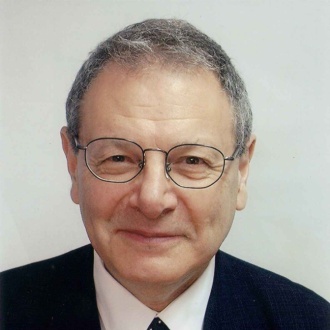Terumah: The Sanctuary
Why the Replica?
Have you ever noticed that we go out of our way to turn the Sanctuary into a replica of the Bet Hamikdash, the ancient temple?
Our Sanctuaries have arks in which the Torah scroll is housed just as the Temple housed an Ark for the Tablets. The Ark is positioned at the front of the Sanctuary and behind the curtain to replicate its position in the Temple. The reading table in the center of the Sanctuary resembles the Golden Altar, which was also positioned at the center. The Ner Tamid, eternal light, hanging at the front of the Sanctuary, symbolizes the Candelabra and the three step stage in front of the Ark represents the three step stage[1]in the forward[2] section of the Temple.
Why do we go to such lengths to replicate the Temple in our Sanctuary? It makes sense that the early diaspora Jews would seek to replicate the familiarity of the Temple, but why do we still build our Sanctuaries to look like the Temple? Can it be that our Sanctuaries are in fact mini Temples?
Mini Temples
The Talmud[3] teaches that G-d followed us, His children, into exile and will remain exiled until the time of our redemption, when He will accompany us on our return to Israel. Where does G-d make His residence in the diaspora? In the houses of worship and Torah study. The Talmud thus explains the verse[4] “G-d, you are our domicile in every generations,” that G-d resides in the home of Torah and prayer.
We thus learn that the Sanctuary is not merely a place to pray, it is G-d’s home in the diaspora. When Jews gather and dedicate a space for prayer, G-d graces that space with His presence just as He did in the Temple though His presence is invisible to us. The difference is that the Temple was G-d’s only residence in this world, but in the diaspora G-d resides in every sanctuary that Jews build. This is why the Talmud invokes Ezekiel’s term[5] a temple in miniature, for the diaspora Sanctuaries.[6]
We now understand that the early Jewish exiles in Babylon didn’t replicate the Temple out of nostalgia.  They did so because Ezikial taught them that the Sanctuary is a substitute for the Temple.
They did so because Ezikial taught them that the Sanctuary is a substitute for the Temple.
The Gates of Jerusalem
This means that our Sanctuaries are nearly as sacred and G-dly as the ancient Temple of Jerusalem. King David wrote,[7] “I rejoiced when they told me let us go to the house of G-d. Our legs stood at the gates of Jerusalem, the rebuilt Jerusalem, a city combined for you in unity.”
According to at least one commentator[8] David was describing the sentiment of diaspora Jews, an event that would occur hundreds of years henceforth. When they would enter their Diaspora Sanctuaries, they would feel as if they are at the gates of Jerusalem and would rejoice. This is because when Jerusalem will be rebuilt in the Messianic age, it will be a city combined of many Sanctuaries.
The Midrash teaches that with the coming of the Moshiach, the land of Israel will expand to encompass the entire world and the boundaries of the Temple will expand to encompass the ancient city of Jerusalem. The size of the Temple cannot be altered, it is delineated by Divine immutable law. Thus, the future expansion cannot pertain to the Temple itself, but to the thousands of diaspora Sanctuaries that will be physically transported [9] to Israel and attached to the Temple from the outside.[10]
Perhaps this is the reason that we Jews are so fascinated by our synagogues. Jewish tours of ancient communities always focus on the synagogues. We enter those synagogues and feel the prayers, tears, passion and sentiment of generations because those tears were never wiped away. They are preserved for the time of the Moshiach, when they will be reconstituted and together with the Sanctuaries in which they were shed, transported to Jerusalem. Jerusalem will thus become a city-large Temple built from the combined Sanctuaries of a united world.
Revealed Here
The Talmudic teaching that we cited earlier spells out that when we return to Jerusalem in the Messianic age, the Divine presence will return with us. This wording implies an incredible thought. As we journey from Exile to Israel, G-d will reveal Himself to us and we will see Him traveling alongside us.
If He will reveal Himself yet in our place of exile, it stands to reason that the revelation will occur in His current place of residence, our Sanctuaries. From the Sanctuary He will journey to Israel where He will come to rest in the Grand Temple.[11]
The order will be as follows: When the Moshiach arrives we will likely stream to our local Sanctuaries, where we will behold a revelation of G-d. The Divine presence will then accompany us on our journey to Israel and Jerusalem, where it will come to rest within the Temple that will descend from heaven. The Diaspora sanctuaries will then be transported[12] to Jerusalem, where they will be physically attached to the actual Temple.[13]
We now understand that our Sanctuaries are designed as mini Temples not only because they serve as surrogates for the Temple until the Messianic age, but because they will actually form part of the larger Temple grounds when the Moshiach arrives. Further, the presence of G-d in our Sanctuary, is the very presence that will be manifest in the Temple.
The next time that you enter your Sanctuary, pause and consider that you tread on hallowed ground. Reflect on the holiness and Divine presence within the Sanctuary and appreciate the symmetry of praying to G-d in His home. If you do this, you will never want to pray at home again.
[1] Midos 2: 6.
[2] The priestly section of the Azarah, the large congregating area.
[3] Babylonian Talmud, Megillah 29a.
[4] Psalms 90: 1.
[5] Ezekiel 11: 17).
[6] This might seem to imply divisibility in G-d, but in truth G-d is indivisible. As the Besht taught, when you have a part of G-d you have all of G-d. Thus, our Sanctuary is the home for G-d’s essence.
[7] Psalms 122: 1-3.
[8] Commentary of Maharsha to Megilah 29a.
[9] Including the Sanctuaries that have by now fallen out of use.
[10] It stands to reason that Synagogues attended by the most, the holiest and most genuine Jews, will be positioned closest to the Temple.
[11] Toras Menachem 5752, v. 1, p. 418.
[12] Either by miracle or by human hand depending on the level of our collective merit at that time.
[13] It is possible that each community will continue to gather in its own Sanctuary and from there make its way to the Temple.
Tags: moshiach, sanctuary


























